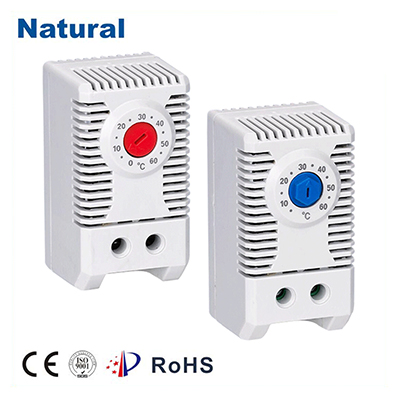Introduction

In our increasingly technologically advanced world, temperature control is a vital aspect across various industries and applications. From household appliances to industrial processes, maintaining the right temperature is essential for optimal performance and safety. One technology that has played a crucial role in temperature regulation is the temperature controller bimetal thermostat. The Basics of Bimetal Thermostats A temperature controller bimetal thermostat is a device that operates based on the principle of bimetallic strips. These strips consist of two different metals bonded together, each with different coefficients of thermal expansion. As the temperature changes, the metals expand or contract at different rates, causing the strip to bend. This bending action is then used to control the opening or closing of an electrical circuit, which in turn regulates the heating or cooling process. Key Components and Working Mechanism Bimetal thermostats consist of several key components, including the bimetallic strip, a contact point, a mechanical linkage, and a temperature dial. The bimetal strip is often shaped to amplify its bending action, and it is securely fastened to the mechanical linkage. The contact point is positioned in a way that it either makes or breaks an electrical circuit based on the movement of the bimetal strip. The temperature dial allows users to set the desired temperature threshold. When the ambient temperature rises or falls beyond the set point, the bimetal strip bends accordingly. This movement causes the mechanical linkage to shift the contact point, either closing the circuit to activate the heating element or opening the circuit to halt the cooling process. Once the temperature returns to the desired range, the bimetal strip returns to its original position, and the circuit is restored to its initial state. Advantages of Bimetal Thermostats Reliability: Bimetal thermostats are known for their reliability. They are simple in design and have minimal components, reducing the risk of mechanical failure. This makes them suitable for critical applications where consistent temperature control is essential. Affordability: These thermostats are cost-effective due to their uncomplicated construction. They are an excellent choice for situations where budget constraints are a concern. Safety: Bimetal thermostats are inherently safe as they do not rely on external power to operate. This feature is especially crucial in environments where electrical hazards must be minimized. Compatibility: They can be easily integrated into various systems and appliances, ranging from water heaters and ovens to industrial machinery, showcasing their versatility. Low Maintenance: With fewer moving parts, bimetal thermostats generally require minimal maintenance, reducing downtime and maintenance costs. Applications The applications of bimetal thermostats are widespread and diverse. They are commonly found in home appliances such as refrigerators, freezers, toasters, and irons. Industrial sectors use them in equipment like ovens, furnaces, and HVAC systems. Additionally, they are employed in medical devices, automotive systems, and even aerospace technology. Conclusion Temperature controller bimetal thermostats stand as a reliable and efficient solution for temperature regulation needs. Their simple yet effective design, cost-effectiveness, and versatility make them a preferred choice across various industries. As technology continues to advance, bimetal thermostats remain an essential tool in the pursuit of precision temperature control, ensuring the efficiency and safety of countless processes and products.